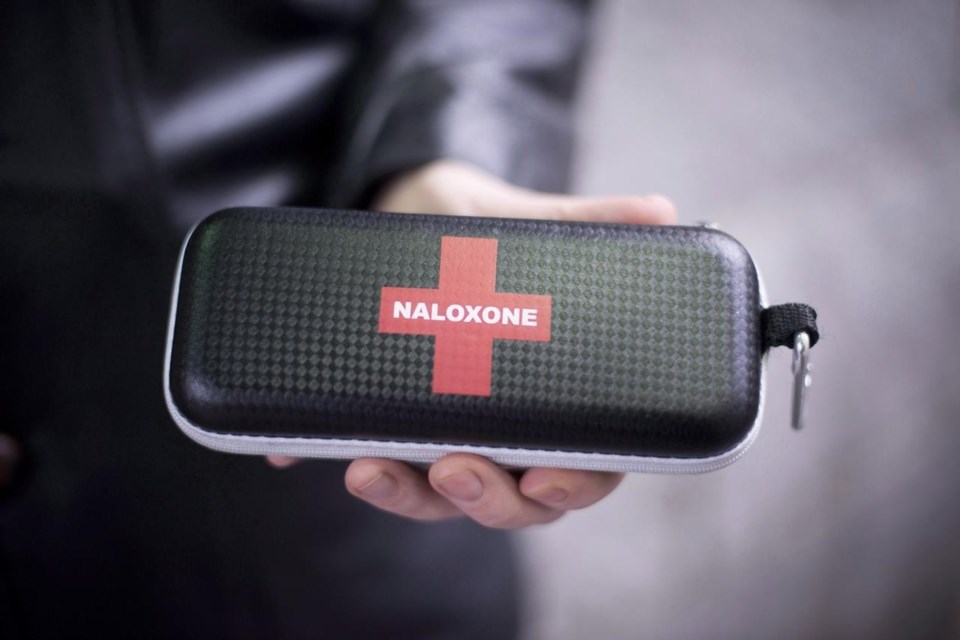ST. JOHN'S, N.L. — As Newfoundland and Labrador's chief medical examiner investigates nearly a dozen drug-related deaths, harm-reduction advocates say an antidote to opioid overdoses should be more widely available across the province.
Gerard Yetman of the AIDS Committee of Newfoundland and Labrador says naloxone — a medication that reverses opioid overdoses — is currently available at more than 100 community-based locations.
But he says the life-saving kits should also be available at pharmacies, as those locations can help provide anonymity in small, rural communities. Yetman says rural residents may not be comfortable requesting naloxone from their local health-care centre because of the stigma associated with drug use.
"We're a small population, where confidentiality can be breached quite easily," he said in a recent interview. "Availability within pharmacies would be a wonderful, excellent addition."
Some provinces, including British Columbia, Alberta, Saskatchewan, Ontario, Quebec and Nova Scotia, offer free naloxone at pharmacies.
Laura Winters, CEO of Stella's Circle, a group that offers housing, employment and counselling services in St. John's, says the community is well-intentioned around harm-reduction efforts, "but sometimes what's missing is the logistical pieces, where the rubber hits the road. There are a lot of challenges in Newfoundland."
She said the province doesn't have safe injection sites — where people can use drugs under the supervision of trained staff — meaning people are consuming drugs alone and are therefore at increased risk of an accidental overdose.
The community has "come a long way" in addressing stigma around mental health, Winters says, but "I don't think we're there yet, around addictions."
Winters said the province needs to emphasize harm-reduction efforts, including by making naloxone kits more widely available.
"We've moved in that direction in the community sector, but you can't walk into any pharmacy in the province and avail of those harm-reduction materials," she said.
Like Yetman, Winters said combating stigma and addressing the "realities" of drug use is key toward reducing overdoses. "The reality is we're losing people," she said, "losing valuable community members."
The office of the chief medical examiner says that between June and July, 11 deaths in Newfoundland and Labrador were presumed to be caused by cocaine, though toxicology results on the presence of the opioid fentanyl have not been completed.
Const. James Cadigan, a spokesman for the Royal Newfoundland Constabulary, says police are "pleading" with drug users and other community members to carry naloxone kits — and to know how to administer them.
Police and other first responders in Newfoundland and Labrador also carry the kits, which include naloxone sprays or injectables. The medication is fast-acting and is used to temporarily reverse the effects of opioid overdoses and restore breathing within two to five minutes, Health Canada says.
Cadigan said police also have a harm-reduction approach to drug use, with an aim to reduce the negative consequences. He said people sometimes purchase drugs and are unaware of their contents, adding that the problem is bigger than a "bad batch" making its way through the community.
"We feel it’s the norm for illicit drugs today," he said in a recent interview. "They’re going to contain substances that are going to increase their potency."
Drugs, he said, are often diluted — or "stepped on" — with harmful substances during the production process in order to add weight to the final product, which increases sales.
“What’s in that substance you’re buying on the street is impossible to determine, as a police force or as a consumer," he said. "Taking a harm-reduction lens, we feel, is the best way to preserve lives in a situation where we know illicit drugs are being used."
The AIDS Committee of Newfoundland and Labrador also runs the Safe Works Access program, which provides clean supplies for drug use and helps prevent the spread of viruses such as HIV or hepatitis C.
Yetman says providing clean drug supplies, along with other harm-reduction efforts, doesn't condone drug use; rather, he says, doing so reduces the harm caused by drugs.
"The average person in a society doesn't realize, drug use is a disease," he said. "Dealing with mental health and addictions, it's very important we promote using clean needles, testing drugs, providing test strips, and ensure every person who is using has a naloxone kit."
This report by The Canadian Press was first published Aug. 10, 2023.
— By Marlo Glass in Halifax.
The Canadian Press



